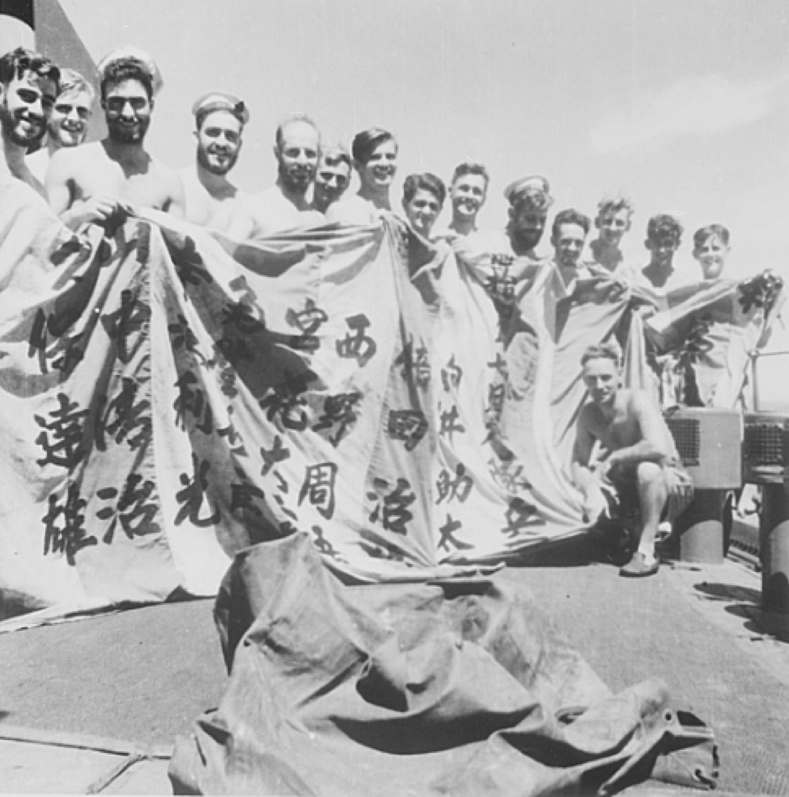HMAS Bundaberg (I)
| Class |
Bathurst Class |
|---|---|
| Type |
Australian Minesweeper |
| Pennant |
J231 |
| Builder |
Evans Deakin Ltd, Brisbane |
| Laid Down |
7 June 1941 |
| Launched |
1 December 1941 |
| Launched by |
Mrs Hurwood, wife of a Director of Evans Deakin Ltd |
| Commissioned |
12 September 1942 |
| Decommissioned |
26 March 1946 |
| Dimensions & Displacement | |
| Displacement | 650 tons |
| Length | 186 feet |
| Beam | 31 feet |
| Draught | 8 feet 6 inches |
| Performance | |
| Speed | 15 knots |
| Complement | |
| Crew | 85 |
| Propulsion | |
| Machinery | Triple expansion, 2 shafts |
| Horsepower | 2000 |
| Armament | |
| Guns |
|
| Other Armament |
|
| Awards | |
| Battle Honours | |

HMAS Bundaberg was one of sixty Australian Minesweepers (commonly known as corvettes) built during World War II in Australian shipyards as part of the Commonwealth Government's wartime shipbuilding programme. Twenty were built on Admiralty order but manned and commissioned by the Royal Australian Navy. Thirty six (including Bundaberg) were built for the Royal Australian Navy and four for the Royal Indian Navy.
HMAS Bundaberg was laid down at Evans Deakin & Co Ltd, Brisbane, Queensland on 7 June 1941. She was launched on 1 December 1941 by Mrs Hurwood, wife of a Director of Evans Deakin Ltd and was the first RAN warship to carry the name of the Queensland city situated on the Burnett River, 385km north of the state capital, Brisbane.
Bundaberg commissioned at Brisbane on 12 September 1942 under the command of Lieutenant Commander Neville D Pixley, RANR.
On completion of her trials in October 1942, Bundaberg was assigned to operational duty as a convoy escort vessel on the east coast of Australia between Melbourne, Sydney and Brisbane.
Until the end of 1942, the enemy were comparatively inactive in Australian waters, but in January 1943 the Japanese launched their third and final submarine campaign on coastal shipping in an attempt to disrupt the flow of war materials to the forward areas. Between January and May 1943, during which period Bundaberg was almost constantly at sea, eleven ships were lost off the coast. Only four of these, however, were in convoy at the time of attack, one of which, the United States vessel SS Portmar, was being escorted by Bundaberg.
In December 1943 Bundaberg began escorting convoys from Cairns to Port Moresby and Milne Bay. After nearly three months of this duty which were mainly uneventful, she transferred to the operational control of Commander Task Force 74 (Australian Squadron) for service in New Guinea waters. Thereafter until she returned to Australia in September 1944 for refit, she was engaged on escort, anti-submarine patrol and bombardment assignments in support of military operations ashore in the New Guinea theatre.
During this period (April to August 1944), Bundaberg bombarded Japanese positions on Alim Island (Admiralties), took part in the landings on Sek island, and gave general support to the campaign which ended with the capture of the Admiralties and the establishment of an Allied base at Manus Island. In addition she carried out anti-submarine patrols in the Solomon Sea, off Hollandia, off Alexishafen and in the Sepik River area. Escort duties were a continuing commitment during this period which included the escort of troop transports from Finschhafen to Madang.
In July 1944 Bundaberg, assisted by her sister ship HMAS Whyalla, succeeded in refloating the Australian Landing Ship Infantry HMAS Kanimbla which had gone ashore at Cape Cretin, New Guinea.
Following a refit in Adelaide during September and October 1944, Bundaberg returned to New Guinea and for the next six months was engaged on escort and anti-submarine duties between Mios Woendi, Biak and Morotai.
In May 1945 she returned to Australia for another refit but by mid-June was back in New Guinea waters to resume duty in the Biak and Morotai areas. There she carried out patrol and escort duties until the end of hostilities.
In September 1945 Bundaberg proceeded to Borneo where she took part in the recovery of Allied prisoners of war. She was also present at Kuching (Borneo) with her sister ship HMAS Kapunda for the official surrender ceremony of the Japanese forces in the area on 9 September.
On 28 October 1945 she arrived at her namesake town in Queensland where she was given an official reception by the citizens. Bundaberg paid off at Brisbane on 26 March 1946, having steamed 112,199 miles since commissioning.
On 4 November 1947 Bundaberg, under tow by her sister ship HMAS Katoomba, departed Brisbane for Sydney, where the vessels arrived on 7 November. Bundaberg remained in Reserve at Sydney. The ship was sold for scrap on 6 January 1961 to Kinoshita (Aust) Pty Ltd.















